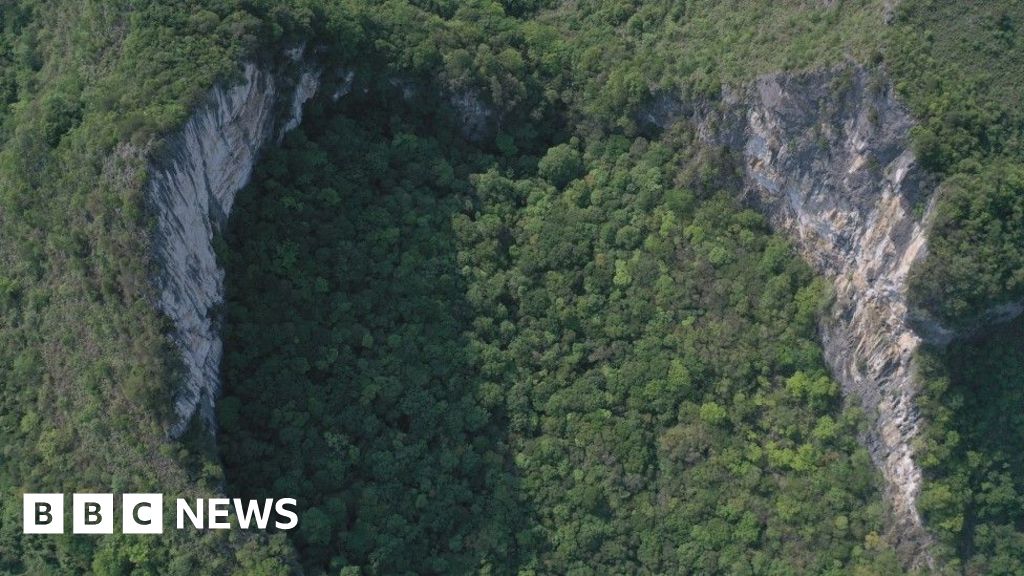Sinkholes in China’s Guangxi province have become a popular tourist attraction. Standing on the edge of a sheer limestone cliff, a couple gazes down into a lost world of ancient forests, plants, and animals, more than 100 meters beneath them. For centuries, these “heavenly pits” or “tiankeng” in Mandarin were unexplored, with fears of demons and ghosts keeping people away. However, drones and brave explorers have revealed new treasures, turning China’s sinkholes into a tourist hotspot.
Guangxi province is home to the majority of China’s sinkholes, with its biggest discovery being an ancient forest with towering trees found just two years ago. These sinkholes trap time, preserving unique ecosystems for centuries. However, the increasing interest from tourists and developers raises concerns about the potential loss of these rare finds.
Explorers like Fei Ge, who once feared the sinkholes as a child, now serve as guides to help others uncover the secrets of Guangxi’s sinkholes. These cavernous pits offer a glimpse into the past, allowing scientists to study extinct animals and plants, as well as discover new species.
Tourists like Rui and Michael descend into the caves, experiencing the thrill of exploring these natural wonders. The popularity of sinkhole tourism has brought much-needed revenue to Guangxi, transforming the fortunes of local communities. However, concerns about overdevelopment and the need to protect these delicate ecosystems remain.
Scientists, like Dr. Lina Shen, emphasize the importance of striking a balance between tourism and conservation to safeguard these habitats for future generations. As visitors continue to flock to Guangxi’s sinkholes, the hope is that these natural wonders will be preserved for years to come.

